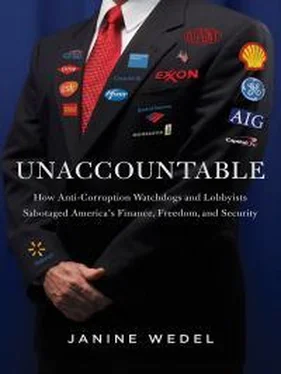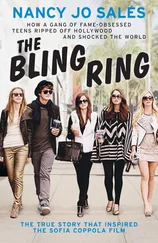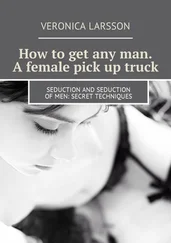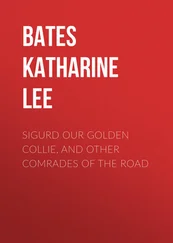The Southeast Asia expert at the Council on Foreign Relations adds: 62
Such makeovers are the result of sophisticated campaigns. In the past, dictatorships simply used lobbyists to court the mostly below-the-radar support of American politicians. But in the post-9/11 world of 24/7 media coverage of every human rights crackdown in Kazakhstan or every whisper of Saudi Arabia funding extremists, authoritarians need a different strategy—an intensive, crisis-management approach to P.R. Like Angelina Jolie, who transformed her image from wild woman to paragon of charity, these dictators have rebranded themselves completely, using every avenue to promote their new images.
We’ll look more at the whole enterprise of shadow lobbying for foreign governments elsewhere in the book. Specifically, in Chapter 5 we examine how firms that fall on the “dark” side of PR do their work. In Chapter 8 we observe up close how high-prestige academics use their seemingly neutral affiliations to (shadow) lobby on behalf of foreign entities.
FAILING UP AND COVERING UP
Like shadow lobbyists, shadow elites are decidedly insiders. While shadow lobbyists engage in one-off projects as solo operators (like O’Bagy on foreign policy), their close cousins, shadow elites, are more complex and highly flexible creatures. 63Shadow elites are more difficult to decipher, working as they often do as part of a longtime trust network and coordinating their efforts to advance their mutual agendas as a self-propelling team. 64Administrations come and go, but shadow elites are not the instruments of any particular administration, even as some of their members join them. Shadow-elite networks persist, spinning overlapping roles at the nexus of official and private power and creating a virtually closed loop that challenges accountability. They are less stable, less visible, and more global in reach than their powerbroker forebears. And they are a paradox in terms of political influence, as political scientist Simon Reich tells me: they are more amorphous and less transparent than conventional political lobbies, yet also more coherent and less accountable. 65
One network that has certain key features of shadow-elite networks includes Lawrence Summers, whose legendary flexian machinations I touched upon in Chapter 1, 66Wall Streeter and former Treasury Secretary Robert Rubin, and several others who have held key posts in the Clinton or Obama administrations or both (and some members who took part in George W. Bush’s). Much has been written about these players in large part because they bear considerable responsibility for setting in motion a whole slew of changes regarding how government deals with financial institutions, the consequences of which we will be saddled with for years to come. My goal here is not to rehash the details of the network’s activities, but to highlight their MO and show how its mode of influencing has helped make them so effective.
Shadow elites exhibit staying power through close-knit insider-ism. Roughly the same people keep coming up in different incarnations to accomplish their joint agenda(s). 67Members of this Summers–Rubin circle who found their places on the Obama economic team—including Treasury Secretary Timothy Geithner and Budget Director Peter Orszag—are all connected to Rubin and each other in various configurations through tenure at either Goldman Sachs or Citigroup, the Clinton administration, and a think tank Rubin founded to promote his economic philosophy, the Hamilton Project. 68The team members had so many connections to Rubin that “the White House now looks like a backstage party for an episode of Bob Rubin, This Is Your Life!” journalist Matt Taibbi quipped in late 2009. 69
Such a circle’s strongly held shared mindsets, even ideology, help them stick together and persist. They have unique expertise, they believe, and are licensed to use it. The Summers-Rubin set preached that containing inflation would be good for Wall Street and everyone, and that if Wall Street went gangbusters, so would America and the world. Even before Obama was sworn in, economist Robert Kuttner observed about the number of Rubin acolytes advising him: “What worries me is there is not one person in the senior group who is the outsider to this club. . . . Where is the diversity of opinion in this economic team?” 70
It is not just a matter of group-think or of people from the same orientation or intellectual and experiential milieu gathering together. A network’s ability to implement policy rests on much more: often, loyalty to it trumps formal practices, testing accountability to the public institution on whose behalf its members supposedly work and to us, the public. Shadow elites circumvent or informalize, actively excluding those officials who should be at the deciders’ table were their job descriptions the determinant.
Consider Rubin and Summers in the Clinton administration. Rubin’s history (his company, Goldman Sachs, perhaps Wall Street’s most elite firm, had long donated more to Democratic candidates than Republican) fit nicely with Clinton, who wanted to put an end to the tax-and-spend liberal cliché in favor of a new kind of Democrat: fiscally conservative, and supportive of both business and the “free market.” 71Rubin and his deputy, Summers, surrounded themselves with fellow believers on Wall Street, as well as at the Federal Reserve, the Securities and Exchange Commission, think tanks, and economics departments at America’s top universities. They were lionized by the old media, and the newly emergent TV business news outlets such as CNBC were their cheerleaders, complete with pom-poms.
Outsiders who tried to puncture the Rubin-Summers bubble found themselves shut out. Recall, for instance, the story of Brooksley Born, head of the Commodity Futures Trading Commission, who took on Summers, Rubin, Greenspan, and Levitt. 72While excluding outsiders to the circle when standard practice would have included them, shadow elites work closely with others (such as bankers in this case) in their close-knit network—who are not, officially, their colleagues—to achieve their agendas. Witness how Rubin and Summers behaved toward Born: at one 1998 meeting, Rubin, according to a participant, famously said to Born: “You’re not going to do anything [to regulate], right?” 73Around the same time, Summers reportedly called Born and yelled: “I have 13 bankers in my office and they say if you go forward with this you will cause the worst financial crisis since World War II.” 74The very players Born wanted to regulate apparently had the deputy and soon-to-be Treasury Secretary (Summers) on speed-dial.
Fast-forward to the next decade and the Obama administration and we see the same MO—the exclusion of should-be included officials and the inclusion of individuals from the network. Take, for instance, Treasury Secretary Geithner. He tried to cut out Sheila Bair, who chaired the Federal Deposit Insurance Corporation (FDIC), whose mission is to safeguard depositors’ accounts. 75After she publicly dissented from Geithner’s handling of Citigroup’s bailout in 2008, the FDIC was confronted with a proposal that would shut the agency out of regulating banks that were deemed to pose a “systemic risk.” That power, Geithner’s Treasury suggested, should rest with the Federal Reserve. The New Yorker described it as relegating the FDIC to the role of “sidekick.” 76Bair left government in 2011 and wrote a memoir that accuses Geithner of being too close to Citigroup during the bailout. 77As she said in a 2012 interview, “My sense was the market needed to have some accountability. The government came in and took all the risk . . . [and] no one learned a lesson.” 78
Geithner apparently even ignored President Obama, who, like Bair, had asked him to consider breaking up Citigroup, according to journalist Ron Suskind’s book Confidence Men . Geithner was dead set against the idea and followed his own agenda promoting the interests of top banks rather than his boss’s wishes. Suskind calls Geithner’s action a “fireable offense.” 79(Geithner, who has released his own account of the era, Stress Test , takes aim at the recommendations of Bair, as well as of Brooksley Born. 80) Did his allegiance to Wall Street trump even his allegiance to Obama? 81
Читать дальше












